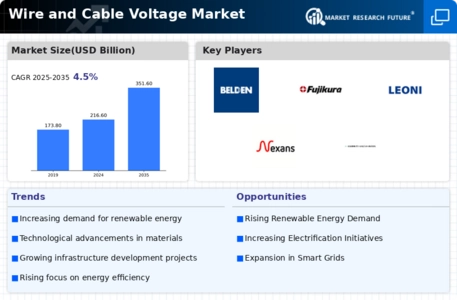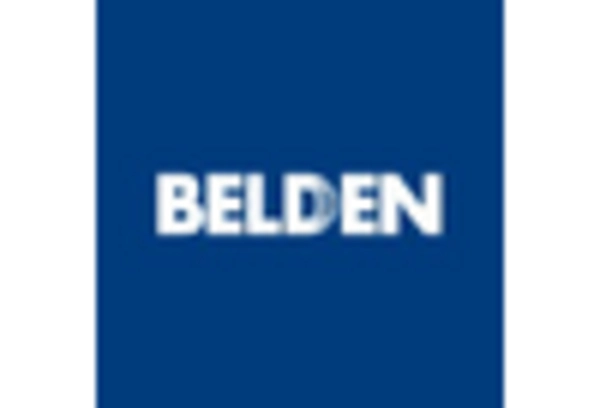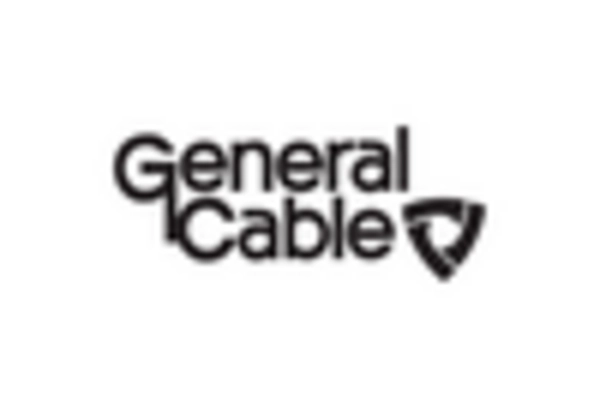-
EXECUTIVE SUMMARY
-
MARKET INTRODUCTION
-
Definition
-
Scope of the Study
- Research Objective
- Assumptions
- Limitations
-
RESEARCH METHODOLOGY
-
3.1.
-
Overview
-
Data Mining
-
Secondary Research
-
Primary Research
- Primary Interviews and Information Gathering Process
- Breakdown
-
of Primary Respondents
-
Forecasting Modality
-
Market Size Estimation
- Bottom-Up Approach
- Top-Down Approach
-
Data Triangulation
-
Validation
-
MARKET DYNAMICS
-
Overview
-
Drivers
-
Restraints
-
Opportunities
-
MARKET FACTOR ANALYSIS
-
5.1.
-
Value Chain Analysis
-
Porter’s Five Forces Analysis
- Bargaining
- Bargaining Power of Buyers
- Threat of
- Threat of Substitutes
- Intensity of Rivalry
-
Power of Suppliers
-
New Entrants
-
COVID-19 Impact Analysis
- Market Impact Analysis
- Regional
- Opportunity and Threat Analysis
-
Impact
-
GLOBAL WIRE AND CABLE
-
MATERIAL MARKET, BY VOLTAGE
-
Overview
-
Low Voltage
-
Medium
-
Voltage
-
High Voltage
-
Extra High Voltage
-
GLOBAL WIRE
-
AND CABLE MATERIAL MARKET, BY INSTALLATION
-
Overview
-
Overhead
-
Underground
-
GLOBAL WIRE AND CABLE MATERIAL MARKET, BY END-USE
-
Overview
-
Aerospace & Defense
-
Building & Construction
-
Oil & Gas
-
Energy & Power
-
IT & Telecommunication
-
Others
-
GLOBAL WIRE AND CABLE MATERIAL MARKET, BY REGION
-
9.1.
-
Overview
-
North America
- U.S.
- Canada
-
Europe
- Germany
- France
- U.K
- Italy
- Rest of Europe
-
9.3.5.
-
Spain
-
Asia-Pacific
- China
- Japan
- South Korea
- Australia
-
9.4.2.
-
India
-
9.4.6.
-
Rest of Asia-Pacific
-
Rest of the World
- Middle East
- Latin America
-
9.5.2.
-
Africa
-
COMPETITIVE LANDSCAPE
-
Overview
-
Competitive Analysis
-
Market Share Analysis
-
Major Growth
-
Strategy in the Global Wire and Cable Material Market,
-
Competitive Benchmarking
-
Leading Players in Terms of Number of Developments in the Global Wire and
-
Cable Material Market,
-
Key developments and Growth Strategies
- Merger & Acquisitions
- Joint Ventures
-
10.7.1.
-
New Voltage Launch/Installation Deployment
-
Major Players Financial Matrix
- Major Players R&D Expenditure.
-
10.8.1.
-
Sales & Operating Income, 2022
-
COMPANY PROFILES
-
Belden Inc.
- Company Overview
- Financial Overview
- Voltages Offered
- Key Developments
- SWOT Analysis
- Key Strategies
-
Fujikura Ltd.
- Company Overview
- Financial Overview
- Voltages
- Key Developments
- SWOT Analysis
- Key
-
Offered
-
Strategies
-
Furukawa Electric Co. Ltd.
- Company Overview
- Financial Overview
- Voltages Offered
- Key Developments
- SWOT Analysis
- Key Strategies
-
Leoni AG
- Financial Overview
- Voltages Offered
- Key Developments
- SWOT Analysis
- Key Strategies
-
11.4.1.
-
Company Overview
-
LS Cables & System Ltd
- Company Overview
- Financial
- Voltages Offered
- Key Developments
- Key Strategies
-
Overview
-
11.5.5.
-
SWOT Analysis
-
NEXANS
- Company
- Financial Overview
- Voltages Offered
- SWOT Analysis
- Key Strategies
- Company Overview
- Financial Overview
- Key Developments
- SWOT Analysis
-
Overview
-
11.6.4.
-
Key Developments
-
11.7.
-
NKT A/S
-
11.7.3.
-
Voltages Offered
-
11.7.6.
-
Key Strategies
-
Prysmian S.p.A
- Company Overview
- Voltages Offered
- Key Developments
- SWOT Analysis
- Key Strategies
-
11.8.2.
-
Financial Overview
-
Sumitomo Corporation..
- Company Overview
- Financial Overview
- Voltages
- Key Developments
- SWOT Analysis
- Key
-
Offered
-
Strategies
-
APPENDIX
-
References
-
Related Reports
-
-
LIST OF TABLES
-
GLOBAL WIRE AND CABLE MATERIAL MARKET,
-
SYNOPSIS, 2025-2034
-
GLOBAL WIRE AND CABLE MATERIAL MARKET, ESTIMATES
-
& FORECAST, 2025-2034 (USD BILLION)
-
GLOBAL WIRE AND CABLE MATERIAL
-
MARKET, BY VOLTAGE, 2025-2034 (USD BILLION)
-
GLOBAL WIRE AND CABLE MATERIAL
-
MARKET, BY INSTALLATION, 2025-2034 (USD BILLION)
-
GLOBAL WIRE AND CABLE
-
MATERIAL MARKET, BY END-USE, 2025-2034 (USD BILLION)
-
NORTH AMERICA
-
WIRE AND CABLE MATERIAL MARKET, BY VOLTAGE, 2025-2034 (USD BILLION)
-
TABLE 7
-
NORTH AMERICA WIRE AND CABLE MATERIAL MARKET, BY INSTALLATION, 2025-2034 (USD BILLION)
-
NORTH AMERICA WIRE AND CABLE MATERIAL MARKET, BY END-USE, 2025-2034 (USD
-
BILLION)
-
NORTH AMERICA WIRE AND CABLE MATERIAL MARKET, BY COUNTRY,
-
U.S. WIRE AND CABLE MATERIAL MARKET, BY VOLTAGE,
-
U.S. WIRE AND CABLE MATERIAL MARKET, BY INSTALLATION,
-
U.S. WIRE AND CABLE MATERIAL MARKET, BY END-USE,
-
CANADA WIRE AND CABLE MATERIAL MARKET, BY
-
VOLTAGE, 2025-2034 (USD BILLION)
-
CANADA WIRE AND CABLE MATERIAL MARKET,
-
BY INSTALLATION, 2025-2034 (USD BILLION)
-
CANADA WIRE AND CABLE MATERIAL
-
MARKET, BY END-USE, 2025-2034 (USD BILLION)
-
EUROPE WIRE AND CABLE
-
MATERIAL MARKET, BY VOLTAGE, 2025-2034 (USD BILLION)
-
EUROPE WIRE AND
-
CABLE MATERIAL MARKET, BY INSTALLATION, 2025-2034 (USD BILLION)
-
EUROPE
-
WIRE AND CABLE MATERIAL MARKET, BY END-USE, 2025-2034 (USD BILLION)
-
TABLE 19
-
EUROPE WIRE AND CABLE MATERIAL MARKET, BY COUNTRY, 2025-2034 (USD BILLION)
-
TABLE
-
GERMANY WIRE AND CABLE MATERIAL MARKET, BY VOLTAGE, 2025-2034 (USD BILLION)
-
GERMANY WIRE AND CABLE MATERIAL MARKET, BY INSTALLATION, 2025-2034 (USD
-
BILLION)
-
GERMANY WIRE AND CABLE MATERIAL MARKET, BY END-USE, 2025-2034
-
(USD BILLION)
-
FRANCE WIRE AND CABLE MATERIAL MARKET, BY VOLTAGE, 2025-2034
-
(USD BILLION)
-
FRANCE WIRE AND CABLE MATERIAL MARKET, BY INSTALLATION,
-
FRANCE WIRE AND CABLE MATERIAL MARKET, BY
-
END-USE, 2025-2034 (USD BILLION)
-
ITALY WIRE AND CABLE MATERIAL MARKET,
-
BY VOLTAGE, 2025-2034 (USD BILLION)
-
ITALY WIRE AND CABLE MATERIAL
-
MARKET, BY INSTALLATION, 2025-2034 (USD BILLION)
-
ITALY WIRE AND CABLE
-
MATERIAL MARKET, BY END-USE, 2025-2034 (USD BILLION)
-
SPAIN WIRE AND
-
CABLE MATERIAL MARKET, BY VOLTAGE, 2025-2034 (USD BILLION)
-
SPAIN WIRE
-
AND CABLE MATERIAL MARKET, BY INSTALLATION, 2025-2034 (USD BILLION)
-
TABLE 31
-
SPAIN WIRE AND CABLE MATERIAL MARKET, BY END-USE, 2025-2034 (USD BILLION)
-
TABLE
-
U.K WIRE AND CABLE MATERIAL MARKET, BY VOLTAGE, 2025-2034 (USD BILLION)
-
TABLE
-
U.K WIRE AND CABLE MATERIAL MARKET, BY INSTALLATION, 2025-2034 (USD BILLION)
-
U.K WIRE AND CABLE MATERIAL MARKET, BY END-USE, 2025-2034 (USD BILLION)
-
REST OF EUROPE WIRE AND CABLE MATERIAL MARKET, BY VOLTAGE, 2025-2034
-
(USD BILLION)
-
REST OF EUROPE WIRE AND CABLE MATERIAL MARKET, BY INSTALLATION,
-
REST OF EUROPE WIRE AND CABLE MATERIAL MARKET,
-
BY END-USE, 2025-2034 (USD BILLION)
-
ASIA PACIFIC WIRE AND CABLE MATERIAL
-
MARKET, BY VOLTAGE, 2025-2034 (USD BILLION)
-
ASIA PACIFIC WIRE AND
-
CABLE MATERIAL MARKET, BY INSTALLATION, 2025-2034 (USD BILLION)
-
ASIA
-
PACIFIC WIRE AND CABLE MATERIAL MARKET, BY END-USE, 2025-2034 (USD BILLION)
-
TABLE
-
ASIA PACIFIC WIRE AND CABLE MATERIAL MARKET, BY COUNTRY, 2025-2034 (USD BILLION)
-
JAPAN WIRE AND CABLE MATERIAL MARKET, BY VOLTAGE, 2025-2034 (USD BILLION)
-
JAPAN WIRE AND CABLE MATERIAL MARKET, BY INSTALLATION, 2025-2034 (USD
-
BILLION)
-
JAPAN WIRE AND CABLE MATERIAL MARKET, BY END-USE, 2025-2034
-
(USD BILLION)
-
CHINA WIRE AND CABLE MATERIAL MARKET, BY VOLTAGE, 2025-2034
-
(USD BILLION)
-
CHINA WIRE AND CABLE MATERIAL MARKET, BY INSTALLATION,
-
CHINA WIRE AND CABLE MATERIAL MARKET, BY END-USE,
-
INDIA WIRE AND CABLE MATERIAL MARKET, BY VOLTAGE,
-
INDIA WIRE AND CABLE MATERIAL MARKET, BY INSTALLATION,
-
INDIA WIRE AND CABLE MATERIAL MARKET, BY END-USE,
-
AUSTRALIA WIRE AND CABLE MATERIAL MARKET,
-
BY VOLTAGE, 2025-2034 (USD BILLION)
-
AUSTRALIA WIRE AND CABLE MATERIAL
-
MARKET, BY INSTALLATION, 2025-2034 (USD BILLION)
-
AUSTRALIA WIRE AND
-
CABLE MATERIAL MARKET, BY END-USE, 2025-2034 (USD BILLION)
-
SOUTH KOREA
-
WIRE AND CABLE MATERIAL MARKET, BY VOLTAGE, 2025-2034 (USD BILLION)
-
TABLE 55
-
SOUTH KOREA WIRE AND CABLE MATERIAL MARKET, BY INSTALLATION, 2025-2034 (USD BILLION)
-
SOUTH KOREA WIRE AND CABLE MATERIAL MARKET, BY END-USE, 2025-2034 (USD
-
BILLION)
-
REST OF ASIA-PACIFIC WIRE AND CABLE MATERIAL MARKET, BY VOLTAGE,
-
REST OF ASIA-PACIFIC WIRE AND CABLE MATERIAL
-
MARKET, BY INSTALLATION, 2025-2034 (USD BILLION)
-
REST OF ASIA-PACIFIC
-
WIRE AND CABLE MATERIAL MARKET, BY END-USE, 2025-2034 (USD BILLION)
-
TABLE 60
-
REST OF WORLD WIRE AND CABLE MATERIAL MARKET, BY VOLTAGE, 2025-2034 (USD BILLION)
-
REST OF WORLD WIRE AND CABLE MATERIAL MARKET, BY INSTALLATION, 2025-2034
-
(USD BILLION)
-
REST OF WORLD WIRE AND CABLE MATERIAL MARKET, BY END-USE,
-
REST OF WORLD WIRE AND CABLE MATERIAL MARKET,
-
BY COUNTRY, 2025-2034 (USD BILLION)
-
MIDDLE EAST WIRE AND CABLE MATERIAL
-
MARKET, BY VOLTAGE, 2025-2034 (USD BILLION)
-
MIDDLE EAST WIRE AND CABLE
-
MATERIAL MARKET, BY INSTALLATION, 2025-2034 (USD BILLION)
-
MIDDLE EAST
-
WIRE AND CABLE MATERIAL MARKET, BY END-USE, 2025-2034 (USD BILLION)
-
TABLE 67
-
AFRICA WIRE AND CABLE MATERIAL MARKET, BY VOLTAGE, 2025-2034 (USD BILLION)
-
TABLE
-
AFRICA WIRE AND CABLE MATERIAL MARKET, BY INSTALLATION, 2025-2034 (USD BILLION)
-
AFRICA WIRE AND CABLE MATERIAL MARKET, BY END-USE, 2025-2034 (USD BILLION)
-
LATIN AMERICA WIRE AND CABLE MATERIAL MARKET, BY VOLTAGE, 2025-2034 (USD
-
BILLION)
-
LATIN AMERICA WIRE AND CABLE MATERIAL MARKET, BY INSTALLATION,
-
LATIN AMERICA WIRE AND CABLE MATERIAL MARKET,
-
BY END-USE, 2025-2034 (USD BILLION)
-
LIST OF FIGURES
-
RESEARCH
-
PROCESS
-
MARKET STRUCTURE FOR THE GLOBAL WIRE AND CABLE MATERIAL MARKET
-
MARKET DYNAMICS FOR THE GLOBAL WIRE AND CABLE MATERIAL MARKET
-
FIGURE
-
GLOBAL WIRE AND CABLE MATERIAL MARKET, SHARE (%), BY VOLTAGE, 2022
-
FIGURE
-
GLOBAL WIRE AND CABLE MATERIAL MARKET, SHARE (%), BY INSTALLATION, 2022
-
FIGURE
-
GLOBAL WIRE AND CABLE MATERIAL MARKET, SHARE (%), BY END-USE, 2022
-
FIGURE
-
GLOBAL WIRE AND CABLE MATERIAL MARKET, SHARE (%), BY REGION, 2022
-
FIGURE
-
NORTH AMERICA: WIRE AND CABLE MATERIAL MARKET, SHARE (%), BY REGION, 2022
-
FIGURE
-
EUROPE: WIRE AND CABLE MATERIAL MARKET, SHARE (%), BY REGION, 2022
-
FIGURE
-
ASIA-PACIFIC: WIRE AND CABLE MATERIAL MARKET, SHARE (%), BY REGION, 2022
-
FIGURE
-
REST OF THE WORLD: WIRE AND CABLE MATERIAL MARKET, SHARE (%), BY REGION, 2022
-
GLOBAL WIRE AND CABLE MATERIAL MARKET: COMPANY SHARE ANALYSIS, 2022
-
(%)
-
BELDEN INC.: FINANCIAL OVERVIEW SNAPSHOT
-
BELDEN
-
INC.: SWOT ANALYSIS
-
FUJIKURA LTD.: FINANCIAL OVERVIEW SNAPSHOT
-
FUJIKURA LTD.: SWOT ANALYSIS
-
FURUKAWA ELECTRIC CO. LTD.:
-
FINANCIAL OVERVIEW SNAPSHOT
-
FURUKAWA ELECTRIC CO. LTD.: SWOT ANALYSIS
-
LEONI AG: FINANCIAL OVERVIEW SNAPSHOT
-
LEONI AG: SWOT
-
ANALYSIS
-
LS CABLES & SYSTEM LTD.: FINANCIAL OVERVIEW SNAPSHOT
-
LS CABLES & SYSTEM LTD.: SWOT ANALYSIS
-
NEXANS: FINANCIAL
-
OVERVIEW SNAPSHOT
-
NEXANS: SWOT ANALYSIS
-
NKT A/S: FINANCIAL
-
OVERVIEW SNAPSHOT
-
NKT A/S: SWOT ANALYSIS
-
PRYSMIAN
-
S.P.A: FINANCIAL OVERVIEW SNAPSHOT
-
PRYSMIAN S.P.A: SWOT ANALYSIS
-
SUMITOMO CORPORATION..: FINANCIAL OVERVIEW SNAPSHOT
-
SUMITOMO
-
CORPORATION..: SWOT ANALYSIS










Leave a Comment